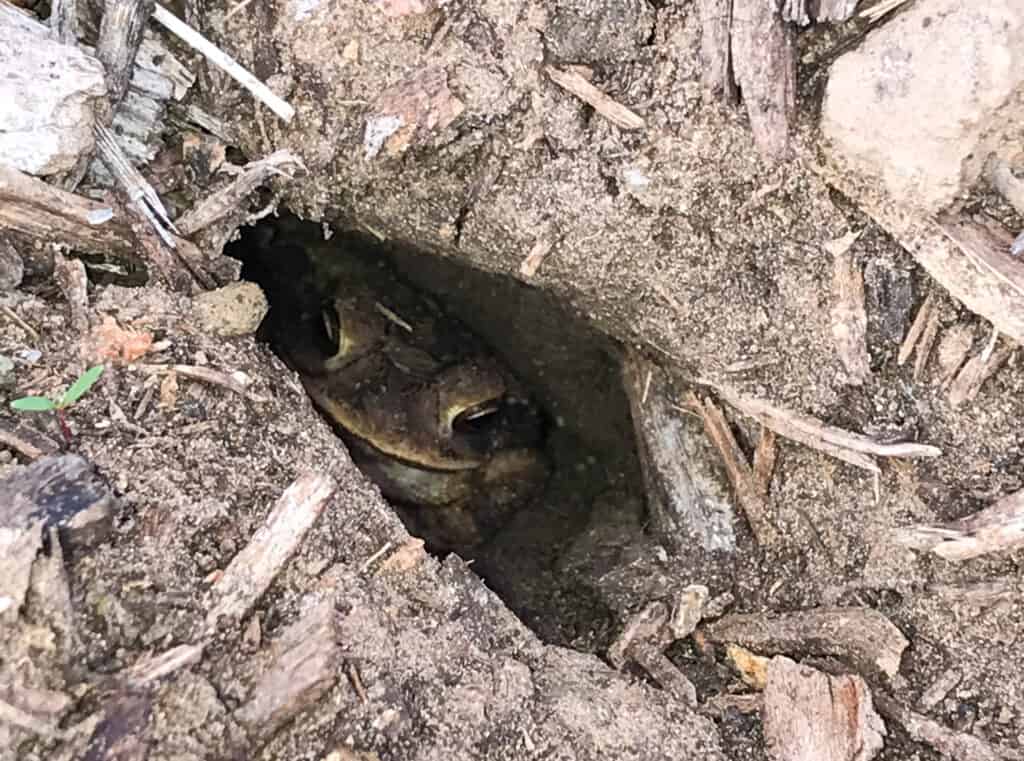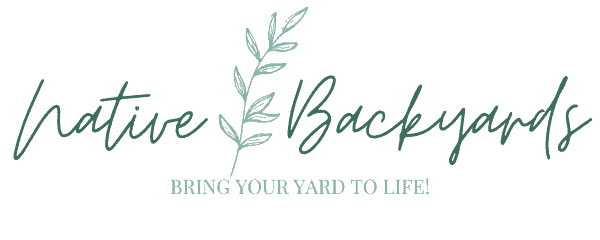Top 6 Benefits of Native Plants in Your Yard
If this entire website is dedicated to native plants, there must be something special about them. In fact, they are the foundation of a healthy ecosystem!
Here are six benefits of native plants. I hope these encourage you to starting planting them in your own yard.
Why Use Native Plants in Your Yard?
1. Many native plants serve as host plants to caterpillars
One big “a ha” moment for me was when I learned that many butterflies and moths will only lay their eggs on very specific plants that they know their caterpillars will eat. These are called host plants.
The most well-known host plant is probably milkweed. It is the only plant monarchs will lay their eggs on. However there are so many host plants beyond milkweed that are critical to our ecosystem.
With fewer native host plants to lay eggs on, there are fewer caterpillars. Without caterpillars, birds lose a major food source for their young. This study shows that caterpillars dominate the nestling diets in 16 out of 20 bird families.
This incredible dynamic is explained in Doug Tallamy’s Nature’s Best Hope (affiliate link) – a book I highly recommend you read. He calls native plants that serve as host plants “keystone plants” because they are so important for the ecosystem.
How it helps your yard:
- More beautiful butterflies and moths visiting your yard to lay eggs.
- More caterpillars in your yard = more birds visiting to eat them!

2. Most plant eating insects can only eat native plants
In addition to caterpillars, other insects rely on plants that they coevolved with to survive. According to Doug Tallamy, author of Nature’s Best Hope (a MUST read), “Ninety percent of the insects that eat plants can develop and reproduce only on the plants with which they share an evolutionary history.”
Often insects bodies have evolved to digest different chemical defenses in native plants. However that is not the case with non-native plants, which insects are unfamiliar with and can often be toxic to them.
So, one of the big benefits of native plants is that insects can eat them! It goes against traditional thinking, but native plant gardeners want insects to eat their plants.
How it helps your yard:
- Your plants will be serving as an important food source instead of just looking nice!
3. Native plants provide important food and shelter for other backyard wildlife
Flowering natives are an important nectar source for pollinators. Many native plants also provide berries, nuts, or seeds for birds and small mammals to enjoy. They are often timed exactly when the animals need them, such as berries and nuts during the winter when other food is hard to come by.
How it helps your yard:
- Your yard can serve as a “habitat island”, offering a place of refuge for birds and other small mammals in a suburban environment.
- You can strategically choose native plants that provide different food sources such as nectar and berries throughout the year.

4. Native plants typically require less water and maintenance
One of the biggest benefits of native plants for backyard gardeners is that they are often easier to grow than non-native plants!
Native plants are adapted to the local climate, rainfall and temperatures. They are used to the soils in your area and tend to grow deep roots, requiring minimal watering once established.
How it helps your yard:
- Native plants save you time and money!
- You don’t have to use pesticides and fertilizer on native plants.
- You can spend more time in your yard enjoying your plants and less time maintaining them.
5. Native plants provide biodiversity
If you look around most yards in your area, you may see the same limited palette of turf grass, trees and shrubs. Many of which are likely non-native species, and therefore unlikely supporting much insect and wildlife populations.
Adding even just a few native plants to your yard helps to create biodiversity. According to Doug Tallamy, non-natives support 29 times fewer animals than do native ornamentals in a similarly landscaped yard.
How it helps your yard:
- Native plants provide more interest in your yard and help it stand out among a sea of sameness
- You should start to notice a greater diversity of insects, pollinators and birds that visit your yard
6. Native plants allow you to plant with a purpose
Once you start learning about native plants and their benefits, it is hard to stop. You have a real opportunity to help your local ecosystem by rethinking how you landscape and garden in your own yard.
Each time you choose a new plant for your yard you now have the information and ability to choose plants that are helpful to your local ecosystem.
How it helps your yard:
- By planting native plants, you can be the hero of your local ecosystem!


Pin this to help spread the word!


Welcome to Native Backyards! I’m Haeley from San Antonio, Texas, and I want to help you grow more native plants.
I have seen firsthand how the right plants can bring your yard to life with butterflies, bees, and birds. I’ve transformed my yard with Texas natives and I’m excited to share what I’ve learned with you.
Join my newsletter here! – each week I’ll send you helpful tips to make your native plant garden a reality!
Want to learn more about me and my garden? Check out my About page!

What are native plants for Denver CO? What is my zone and where could I get native plants that will thrive in my yard? Preferably something that needs little maintenance.
Thanks!
Hi Ronald, Thanks so much for your note. I”m glad you’re looking to add more natives to your yard! I found this helpful list of native plants for the Denver area: https://www.ijdesign.com/blog/native-plants-for-denver/. You should also be sure to check out the Colorado Native Plant Society. They have lots of resources on their site: https://conps.org/gardening-with-native-plants/. Denver is located in Growing Zones 5b-6a. When shopping for native plants, skip the big box retailers and find a local nursery that carries natives and is knowledgable about them. Best of luck!
Good Morning Haeley,
Could you please tell me what Native plants are best for West Chester, PA? I would love to add something a little colorful if possible. It’s very green here and has lots of wild flowers.. I would love to add something different to my yard.
Hi Rossanna, thanks for your note! I found this resource with a list of PA native plants for the perennial garden to get you started: https://extension.psu.edu/pennsylvania-native-plants-for-the-perennial-garden
Some that caught my eye on the list are Asters, Coreopsis, Joe Pye Weed, Gayfeather, Bee Balm, and Black Eyed Susan. It looks like you have some nurseries near you that carry natives such as Distinctive Gardens and Redbud Native Plant Nursery. I would head there and see what they have! Fall is a great time to plant native perennials!
It only makes sense that the fauna of any given area would prefer the plant species it’s ancestors evolved with… We human beings generally have so little regard for the needs of anything but our own particular esthetic values, it’s gratifying to see that here at the eleventh hour someone has taken note, and has done something. 🤔🙄💔
Love yr work!
What is the ZONE of Clarkston, MI 48348? I know milkweed thrives here but have never seen monarch butterflies taking advantage of its presence.
Hi Haley! It looks like you are in growing zone 6a. Check out this awesome native plant list for Southern Michigan to get you started: https://www.canr.msu.edu/nativeplants/plant_facts/local_info/south_lower_peninsula
Swamp Milkweed and Butterfly Milkweed look to be two types of native milkweeds for your area that should be great for attracting Monarchs!
What are Native Plants for Mobile, Al.
Hi Ida, Here are two sources that will help you find native plants for your area in Alabama. Look for a nursery near you that specializes in native plants. They’ll be a big help too! https://alabamaliving.coop/articles/beautiful-hardy-adaptable-and-local-ten-native-plants-that-feel-like-home/
https://www.wildflower.org/collections/collection.php?collection=AL